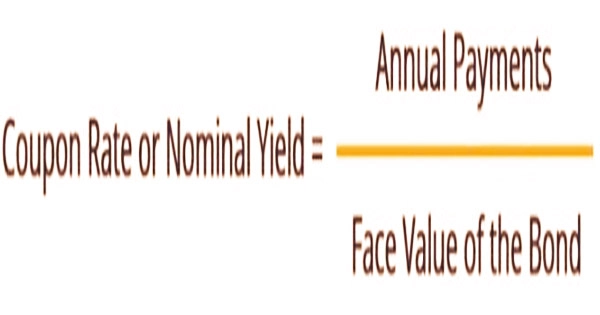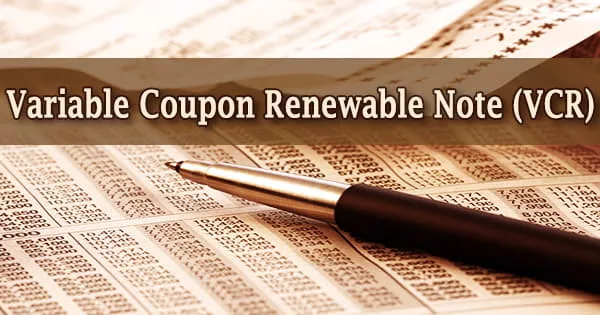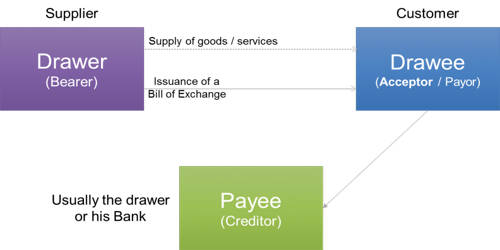A variable coupon renewable note (VCR) is a type of renewable fixed-income security. It’s a form of debt security that matures every week. Every week, the principle of this instrument is automatically reinvested at fresh interest rates. The return, known as the variable coupon rate, is subject to periodic adjustments, which is one of its unique features.
Every week as this security matures, the principal is automatically reinvested at fresh interest rates. A renewable note is a debt security with a weekly maturity date. The coupon payment is the annual interest paid on such a bond. The coupon is typically set weekly at a predetermined spread over the T-bill rate.
Coupons are paid during the term of the bond’s validity, which is from the issue date to the maturity date, and are stated as a percentage of the face value. The security is automatically and constantly reinvested until the owner of the security wishes that it no longer be reinvested.
The coupon rate is calculated by dividing the total amount of coupons given to the investor throughout a year by the bond’s face value. The effective rate of return to the investor is known as the coupon rate.

A variable coupon renewable note (VCR) is a financial security that matures every week and has the principal reinvested at a new interest rate determined by a defined spread over a reference rate. The fixed spread is the difference between a security’s ask and bid prices.
Even when market prices change, the spread remains constant, therefore it does not fluctuate due to market conditions. The reference rate is a standard against which other interest rates are measured.
A rotating note is a type of security that matures every week. Once this asset has matured, the principal must be automatically invested at a fresh interest rate every week. The coupon is usually set weekly at a predetermined spread over the Treasury bill rate, specifically the 91-day T-bill rate. A VCR note’s coupon is paid quarterly and automatically renews at quarterly intervals.
As a result, the coupon is renewed every 91 days or every three months. It means that the coupon’s maturity is extended for another 91 days after every 91-day term. It contains an inbuilt put option that allows the note holder to “put” the notes back to the issuer at par on coupon dates.
This means that if an issuer receives a put notice, they must buy the note back from the debtor at a lower spread than the reference rate. The procedure is automatic, which means it will continue unless the investor specifically requests that the security not be reinvested anymore. VCR notes differ from variable-rate renewable notes (VRR) in a few ways.
While VCR coupon rates change weekly, VRR coupon rates change monthly. Although both securities have the feature of being automatically reinvested at regular intervals, variable-rate renewable notes have rates that vary monthly rather than weekly. Because the reference rate is a commercial paper rather than a government bond, this is the case.
Furthermore, the variable rate renewal notes’ coupon rate is a fixed spread over the 1-month commercial paper rate. On variable coupon renewable notes, there are integrated options on the coupons. A put option is a stock market instrument that allows its holder to contract to sell a security at a defined price and on a predetermined date.
Variable-rate renewable notes will, in effect, pay interest at a fixed rate that will be adjusted on a regular basis based on the 1-month commercial paper rate plus any spread and/or spread multiplier, subject to the minimum and maximum interest rates, if applicable. As a result, the embedded put option permits the note’s holder to exercise her right to sell the note back to the issuer at par on the coupon’s maturity date, which occurs every three months.
Information Sources:
















